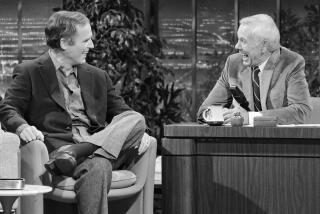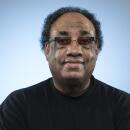Judge Bars Lawsuits Against Airport Over Property Damage
A Los Angeles Superior Court judge ruled last week that owners of homes near Burbank Airport cannot sue the airport for property damage caused by aircraft noise, dealing a severe blow to aircraft noise protesters and boosting plans for a larger airport terminal.
Although the opinion by Judge Robert I. Weil provided that some homeowners may be able to recover damages for personal injury due to jet noise, his ruling appeared to crush the hopes of about 600 plaintiffs who had filed damage lawsuits against the airport, attorneys for both sides said.
In addition, Weil’s decision advances plans for a new terminal at Burbank Airport that could handle 7.3 million passengers annually by the year 2000, more than double the airport’s current traffic load.
Burbank Airport executives have said the prospect of having to pay future legal judgments had concerned the financial markets that rate the bonds the airport will have to sell to finance improvements. Wednesday’s decision erased most of that uncertainty, they said.
‘Inverse Condemnation’
Weil, who heard the case without a jury, ruled based on arguments in briefs presented by attorneys for the airport and neighborhood groups last May.
The decision involved 24 residents of Burbank, North Hollywood and Sunland, chosen to represent 600 plaintiffs to reduce the complexity of the case, attorneys said. Most of the lawsuits were filed in 1983, five years after the Burbank-Glendale-Pasadena Airport Authority bought the airport from the Lockheed aircraft manufacturing company.
John J. Schimmenti, an attorney for the plaintiffs, complained that the airport authority inflicted noise on their neighborhoods, lowering the value of their homes. He argued that this was “inverse condemnation”--the practical equivalent of a government agency taking away property by condemning it.
But airport attorneys countered that if the airport had taken anything from the homeowners, the process should be considered a “prescriptive avigation easement.”
Acquired Right
An easement is the right to use someone else’s property. “Avigation” refers to the right to fly over property. An easement can be acquired by “prescription” if the owner did not protest the use of the easement within five years after the use began.
The airport thus was arguing that by sending aircraft over these homes for more than five years without complaint, it had acquired the right to continue doing so.
The airport attorneys also argued that property values had risen in the area surrounding the airport, demonstrating that the airport had not lessened the value of the homes there.
Weil held that there had already been substantial noise impacts on surrounding residential areas before the creation of the airport authority, Schimmenti said.
Wins and Losses
Schimmenti interpreted the ruling as meaning that the judge had applied a 5-year limit on the filing of damage claims. “Since the noise had already been going on for more than five years, it was already too late to sue, and the cases that were filed are barred from the court,” he said.
“This is a substantial win for the airport on the property damage issue,” Schimmenti said. “On the personal damage issue, it’s a minor win for the plaintiffs.”
Richard Simon, an attorney representing the airport authority, called Weil’s decision “a substantially complete victory for the airport. . . . It does not finally conclude, but brings closer to conclusion, a longstanding bit of litigation that I believe never should have existed.”
Simon said that because the 24 plaintiffs were a representative sample, the same rejection would be likely in the remaining cases.
Personal Injury
Only five of the 24 plaintiffs would be able to sue the airport for personal injury due to the jet noise, according to the decision.
Erich Luschei, another attorney for the airport, said plaintiffs may still be able to sue for personal injury and emotional distress if they can show “substantial interference with their use and enjoyment of their property.”
In 1985, the state Supreme Court ruled that neighbors could sue airports as “continuing nuisances,” meaning the same person could file a theoretically unlimited number of suits based on nuisances, such as jet noise, that occur repeatedly.
But Simon said the amount of damages in such cases would be small, and that the airport is appealing that ruling.
Richard Vacar, deputy director of operations at Burbank Airport and himself a lawyer, was happy at the news. The financial uncertainty raised by the legal actions had cast doubt on plans for the airport’s new terminal, he said.
“This puts to rest a lot of questions about our liability,” he said.
Burbank Airport has planned to build a terminal in the 1990s at an estimated cost of more than $150 million, a large part of which would be financed by bonds. Unpredictable expenses due to the legal actions could have led to lower ratings for the bonds, forcing the airport to pay higher interest on the loans, or perhaps making the project financially unfeasible.
“The marketplace would be more favorably disposed to lending money at a lower interest rate if some of the risk were removed,” Vacar said. “I think this takes care of that somewhat.”
‘We’re Sunk’
Some of the 24 plaintiffs reacted with frustration and anger.
“We’re sunk,” said Andre Alet, 74, a 40-year resident of Burbank. “All those meetings the homeowners went to, all that money, down the drain. It angers me. We worked so hard to beat them.”
Mary Poncin, 75, said she was not caught off guard by the decision. “I would have been surprised if they had given us a break,” she said.
“It’s not that there wasn’t noise before. But it’s the number of flights we have now. You just can’t compare the way it was then and the way it is now.”
More to Read
Sign up for Essential California
The most important California stories and recommendations in your inbox every morning.
You may occasionally receive promotional content from the Los Angeles Times.










